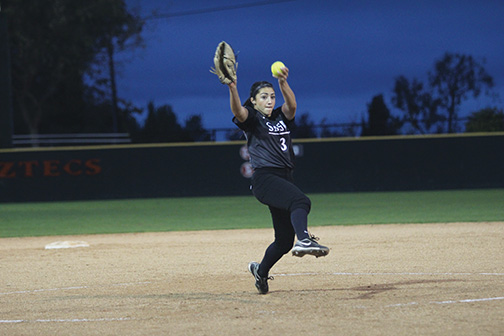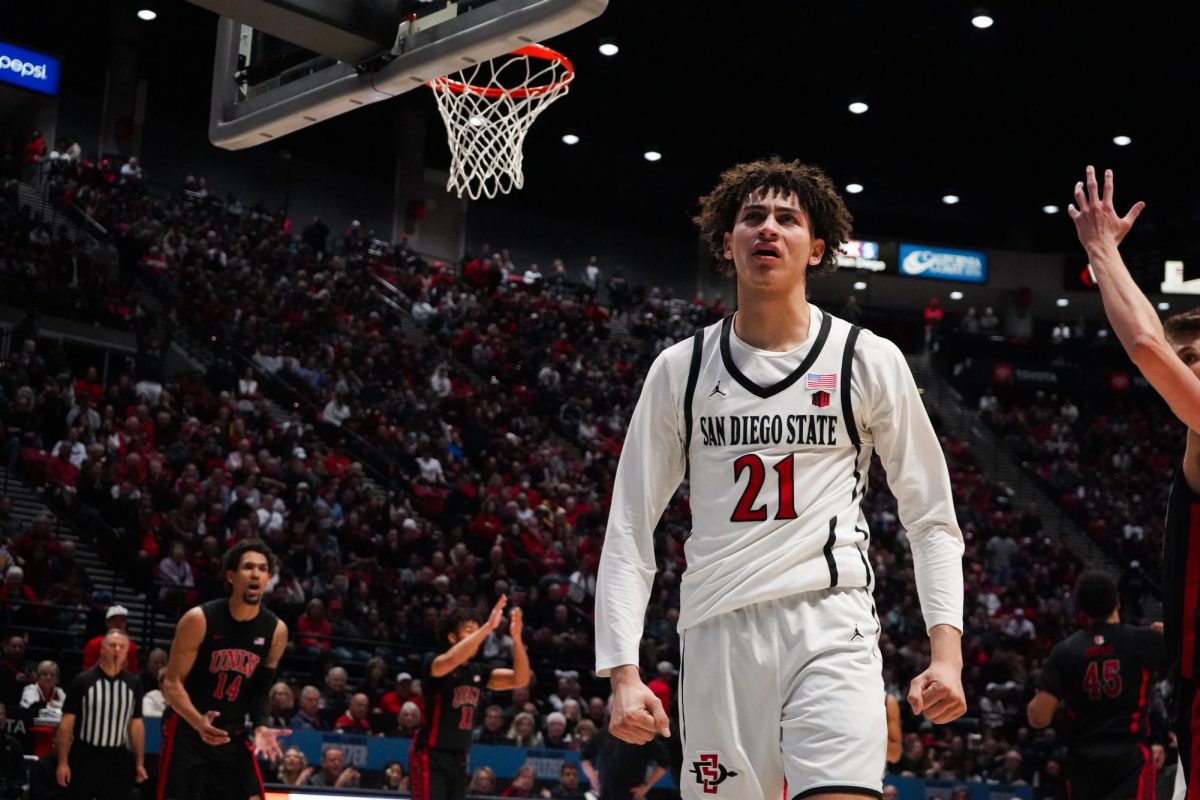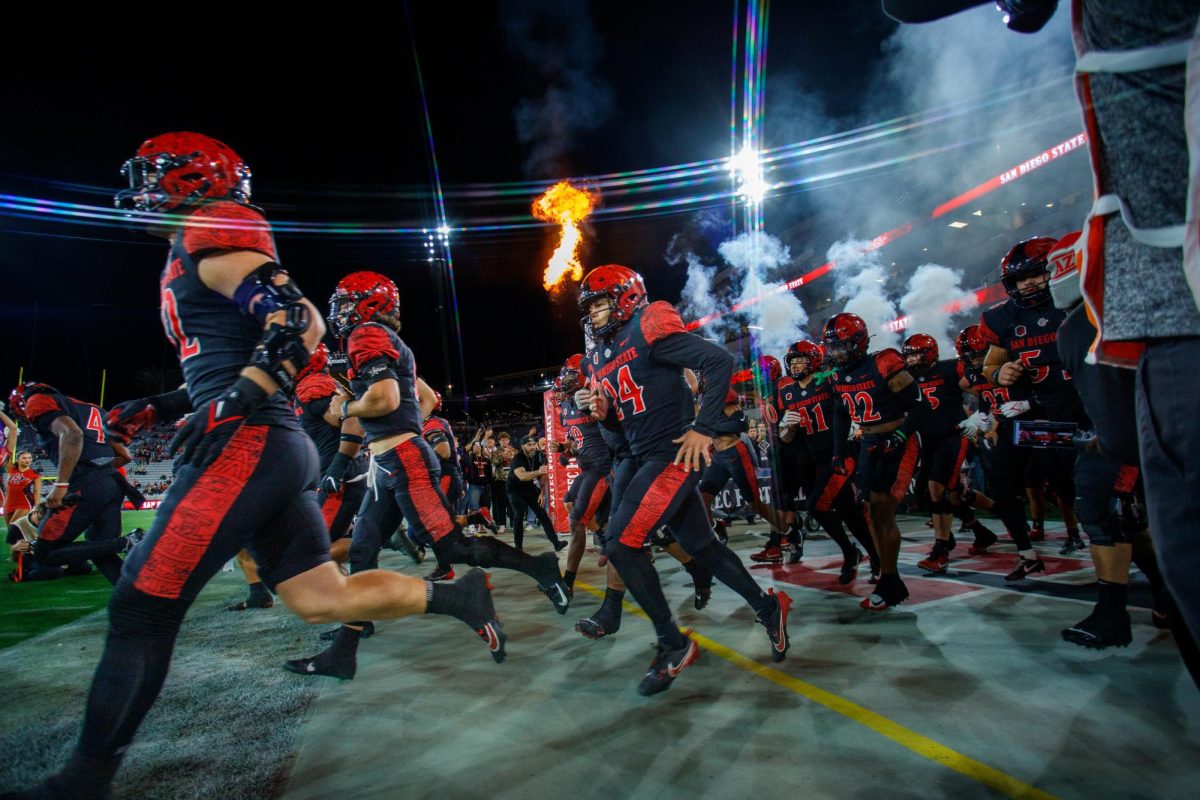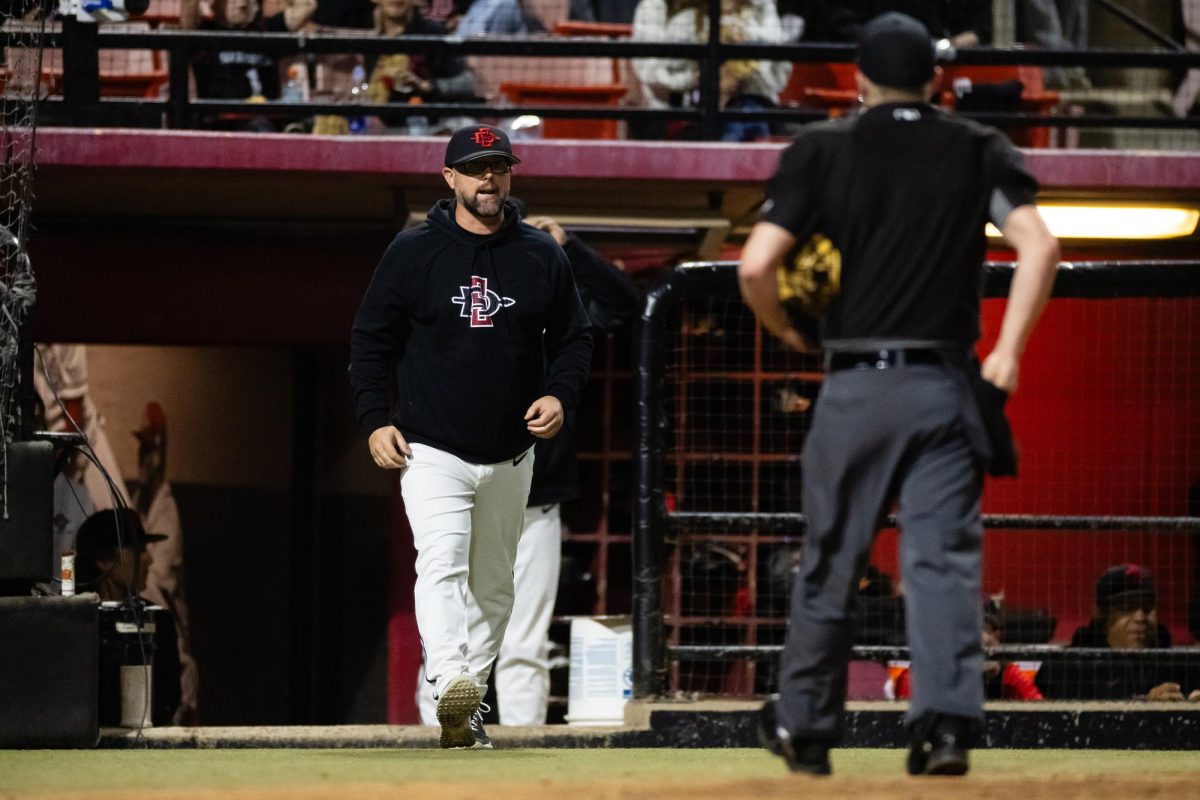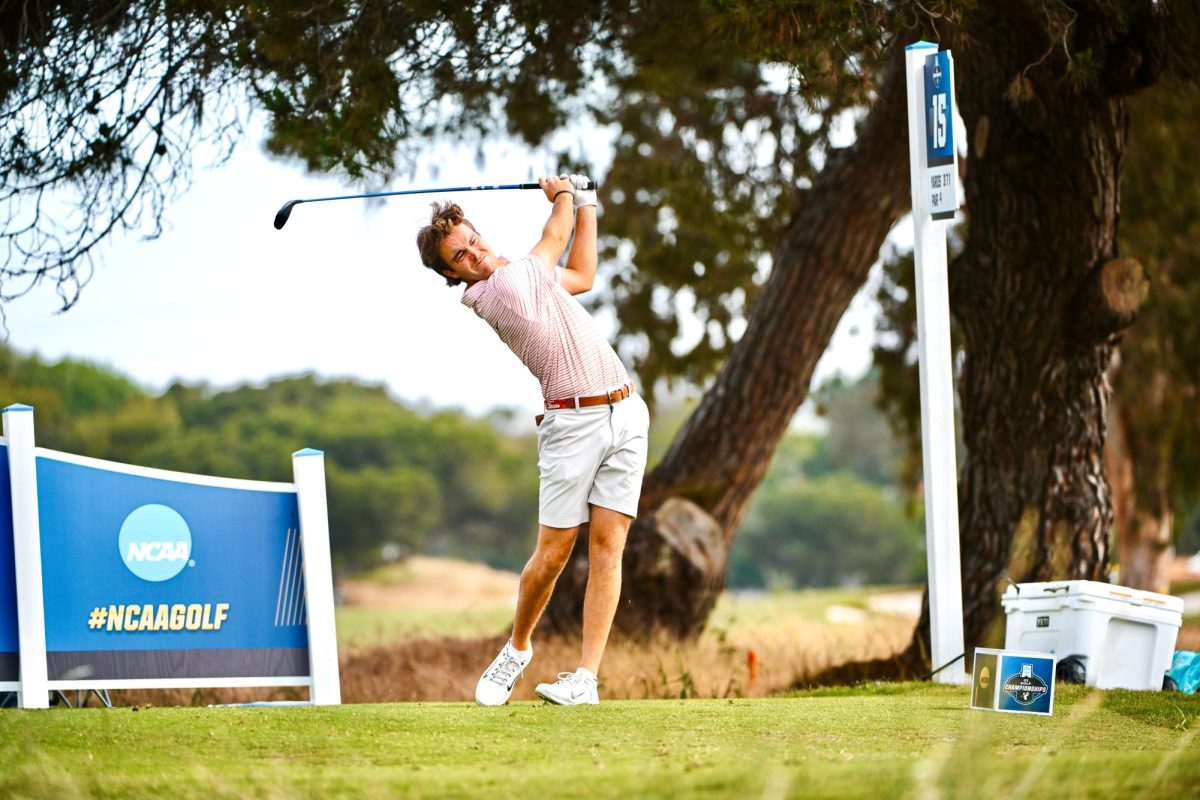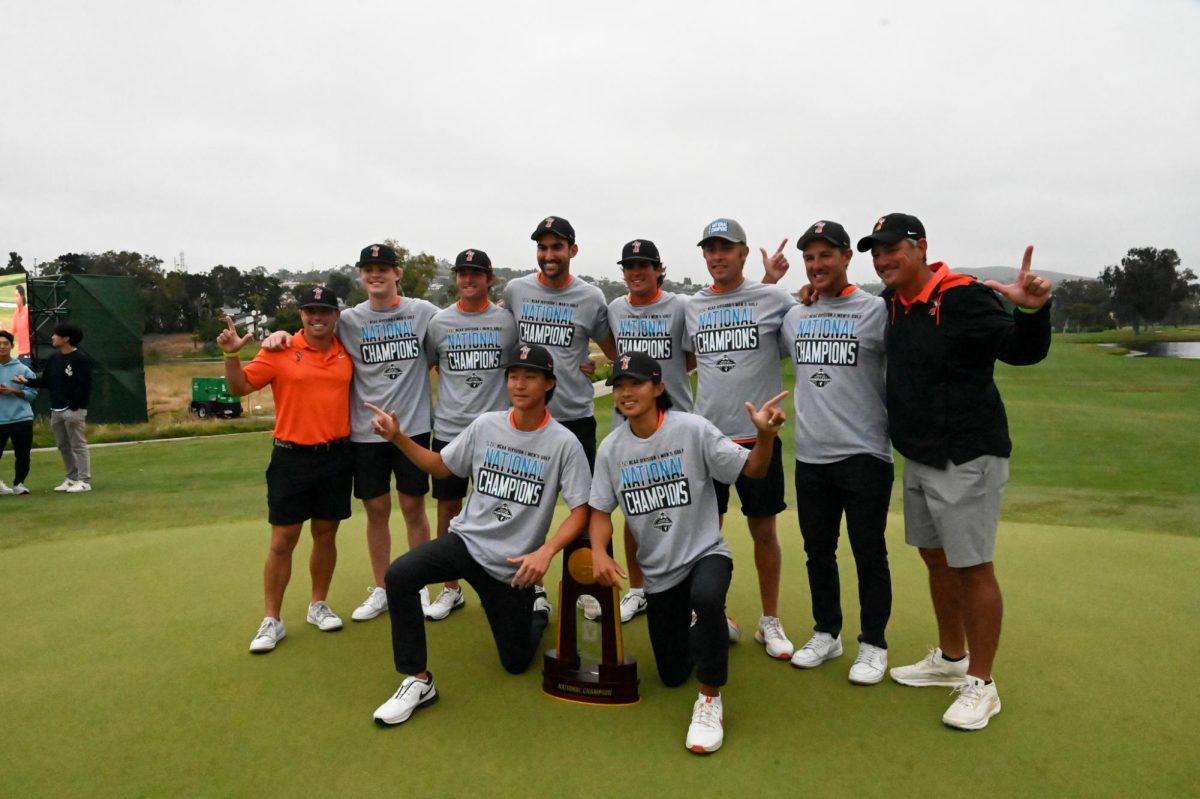It seems crazy to label San Diego State’s softball team as an underdog. After all, it won 40 games and the Mountain West Championship this year. Yet SDSU entered the NCAA Regionals in Tempe, Ariz., matched up against better known programs from the PAC-12 and Big Ten.
From the dugout, head coach Kathy Van Wyk observed Michigan’s superiority in resources.
“(Michigan) had a doctor with them who could administer an IV during games,” Van Wyk said. “Don’t you think in 100 degree temperatures it would’ve been great to put an IV in my kids’ arms?”
Wilting in the heat, SDSU played as though it was a 40-loss team, unleashing fielding errors and mental mistakes and lost two out of the three games it played. In doing so, SDSU softball maintained its perfect record in NCAA Regional or Super Regional play: 10 appearances, 10 eliminations.
It’s easy to say money is why SDSU doesn’t parlay conference championships into national championships. But an uneven financial balance tells only part of the story behind the SDSU’s inability to advance. Like it or not, it needs a better conference.
Softball was supposed to be impervious to the oligarchy that collegiate sports have become. For the tyranny that a “Daddy” Warbucks school such as Alabama imposes in football, softball was once ruled by universities similar in stature to Van Wyk’s tiny alma mater, California State University, Fullerton. But like a four-year basketball player at the University of Kentucky, no one does it that way anymore.
For proof, look no further than the NCAA Women’s Softball World Series championship history website. From 1982 to 1994, a mid-major vied for the crown seven times. But since 1995, only once has a mid-major competed for glory.
Strength of schedule matters in the post-season because it suggests which teams are combat tested. Mountain West opponents aren’t good enough to prepare SDSU for the brawls to come. Look at it this way, if scheduled to fight UFC heavyweight champion Cain Velasquez, you wouldn’t prepare by sparring against flyweights only. But that’s the Mountain West’s way.
If SDSU wants to be ready for the national stage, it must face heavyweights throughout the season instead of facing the glass jaws from a dilapidated gym in a neighborhood far from the sun. Consider this: California State University, Fresno; Utah State University; and the University of Las Vegas, Nevada are the only Mountain West teams to make softball’s World Series. In contrast, three of the eight World Series qualifiers this year came from the SEC. The Big 12 sent two, followed by the PAC-12 and Big Ten each sending one. The message is clear: If you want to play for the best, you must play the best during the regular season.
Still, Van Wyk is professional enough to battle on despite the disadvantage of playing in a thin conference. Her confidence comes from knowing that injured senior Lorena Bower slugger will offset losing slugger Patrice Jackson because her playing eligibility expired. Van Wyk is also counting on returning pitchers Erica Romero and Andi Smith maturing enough to minimize Mountain West Pitcher of the Year Danielle O’Toole’s workload.
Of the two scenarios, growing Romero and Smith is more critical, Van Wyk said.
“It became obvious as the games went on,” Van Wyk said, “When you get to the regionals and Super Regionals, you (must) have two good pitchers.”
This year Van Wyk didn’t. So she sent O’Toole to face Michigan on back-to-back days. Having faced O’Toole for 8.2 innings the day before, Michigan’s hitters squared up solidly on O’Toole’s usually unhittable pitches, knocked her out early and ended an otherwise stellar season for both O’Toole and her team.
As long as Van Wyk is the coach, SDSU is a lock for Mountain West Championship contention. Eventually, she’ll take SDSU to the College World Series and remove the underdog label. That label will rip away cleanly when the Mountain West starts helping.



